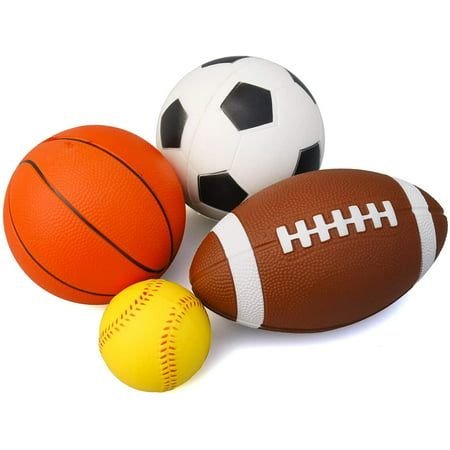Encouraging children to participate in sports is a fantastic way to foster their physical, mental, and social development. However, ensuring their safety while they engage in physical activities is a top priority. Choosing the right sports equipment plays a crucial role in keeping kids safe and enhancing their performance. This guide highlights essential factors to consider when selecting safe and high-quality sports gear for children.
Why Safe Sports Equipment Matters
Providing children with appropriate and reliable sports equipment offers several benefits:
Injury Prevention: Proper gear reduces the risk of common sports injuries, such as sprains, fractures, and concussions.
Enhanced Comfort: Well-fitted equipment ensures children can focus on their performance without discomfort.
Boosted Confidence: Knowing they are well-protected allows kids to play with confidence and enthusiasm.
Skill Development: High-quality equipment tailored to their needs helps children refine their skills more effectively.
Key Factors to Consider When Choosing Sports Equipment for Kids
- Age Appropriateness
Sports equipment should be suitable for the child’s age and developmental stage. For instance:
Use smaller, lightweight balls for younger children to improve their grip and control.
Adjustable gear, like helmets or shin guards, allows room for growth without compromising safety.
- Proper Fit
Ill-fitting equipment can cause discomfort or increase the risk of injury. Ensure:
Helmets fit snugly without slipping but are not too tight.
Shoes provide ample support and have the right size and grip for the playing surface.
Protective gear, such as pads or gloves, covers the required areas adequately without restricting movement.
- Material Quality
High-quality materials offer better durability and protection. Look for:
Impact-resistant plastics: Ideal for helmets and protective gear.
Breathable fabrics: Keep kids cool and comfortable during physical activity.
Non-toxic materials: Ensure all components are free from harmful chemicals.
- Certified Safety Standards
Check for safety certifications and standards, such as:
ASTM International or CE marks for helmets and protective gear.
NOCSAE (National Operating Committee on Standards for Athletic Equipment) certification for sports-specific equipment.
- Sport-Specific Needs
Different sports have unique requirements. Ensure the gear matches the demands of the activity:
Cycling: Certified helmets, gloves, and knee pads.
Football (Soccer): Shin guards, cleats, and size-appropriate balls.
Basketball: Non-slip shoes with ankle support and age-appropriate basketballs.
Baseball: Properly sized bats, gloves, and batting helmets.
Essential Sports Equipment for Kids
- Protective Gear
Safety gear is essential in minimizing the risk of injuries:
Helmets: For activities like cycling, skateboarding, and contact sports.
Mouthguards: Protect teeth and gums in sports like football, hockey, and martial arts.
Pads: Knee, elbow, and wrist pads for skateboarding, rollerblading, or biking.
Shin Guards: Mandatory for soccer to prevent lower leg injuries.
- Footwear
Proper footwear is crucial for comfort, support, and injury prevention:
Sport-Specific Shoes: Cleats for soccer, court shoes for basketball, and running shoes for track.
Arch Support: Essential for growing feet to avoid long-term issues.
Non-Slip Soles: Provide better grip on various surfaces.
- Clothing
Comfortable and functional clothing enhances performance:
Breathable Fabrics: Moisture-wicking materials keep kids dry and comfortable.
Weather-Appropriate Gear: Insulated jackets for winter sports and lightweight clothing for summer activities.
Reflective Elements: Improve visibility for outdoor sports during low-light conditions.
- Sports Equipment
Ensure the equipment matches the child’s skill level and size:
Adjustable basketball hoops for younger players.
Lightweight tennis rackets for better handling.
Age-appropriate balls to reduce strain and improve control.
Tips for Maintaining Sports Equipment
Regular Inspections: Check for wear and tear, such as cracks in helmets or fraying straps.
Proper Cleaning: Wash fabric-based gear and wipe down hard surfaces to prevent bacteria buildup.
Storage: Keep equipment in a cool, dry place to avoid damage from moisture or heat.
Timely Replacements: Replace worn-out or outgrown gear promptly to maintain safety.
Encouraging Safe Play Habits
In addition to providing high-quality gear, teaching kids safe play habits is equally important:
Warm-Up Exercises: Reduce the risk of muscle strains by encouraging proper warm-ups.
Proper Technique: Train children on the correct way to use equipment and perform sports-specific movements.
Hydration: Ensure kids stay hydrated to prevent fatigue and overheating.
Supervision: Always monitor younger children during sports activities to ensure safe play.
Conclusion
Investing in safe and high-quality sports equipment is an essential step in fostering a love for physical activity while protecting kids from injuries. By choosing age-appropriate, well-fitted, and durable gear, you can ensure that children enjoy their favorite sports with confidence and safety. Combine the right equipment with good habits, and watch your young athletes thrive in their chosen activities!
